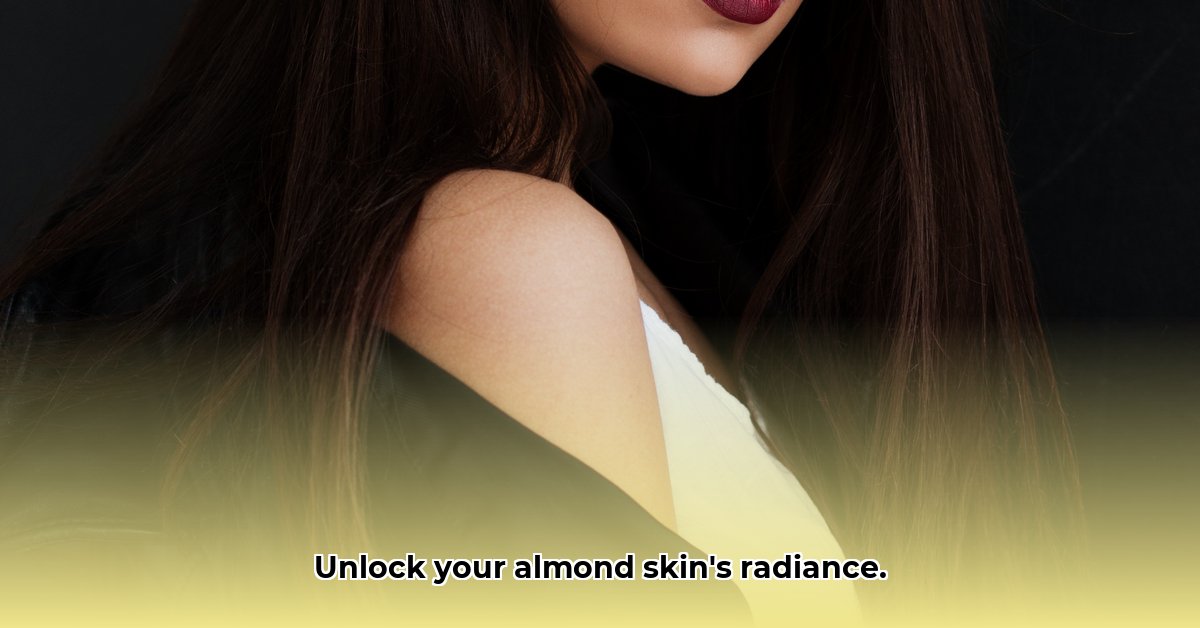Ever wondered how to make your almond skin absolutely glow? This guide is your roadmap to radiant skin. We’ll break down everything from understanding your unique skin tone and its variations to choosing the right skincare and makeup to make you shine. We’ll tackle common issues like dark spots and sun protection, and share tips to keep your skin healthy and happy for years to come. It’s all about celebrating your beautiful skin and feeling confident in your own skin. For more in-depth information, check out this helpful guide on almond skin tones: Almond Skin Guide. Let’s get started!
Models with Almond Skin Tone: A Radiant Guide
Almond skin is a gorgeous, warm, medium-brown hue, often described as rich and versatile. Think of it as a beautiful canvas! Melanin, the natural pigment, protects your skin but can also make you more prone to hyperpigmentation (dark spots). Understanding this is the first step to truly glowing skin.
Understanding Your Unique Complexion
Almond skin tone isn’t one-size-fits-all; there’s a spectrum of variations. Some have cooler undertones (pink, red, or blue hues), while others lean warmer (golden, olive, or yellow hues). The amount of melanin present and your genetic background determine your exact shade. Knowing your undertone is essential for choosing the right makeup and clothing to enhance your natural beauty.
To determine your undertone, consider the following:
- Vein Test: Look at the veins on your wrist. Bluish veins suggest cool undertones, greenish veins indicate warm undertones, and if you see both, you likely have neutral undertones.
- Jewelry Test: Notice whether gold or silver jewelry complements your skin better. Gold tends to look better on warm undertones, while silver flatters cool undertones.
- Sun Reaction: Observe how your skin reacts to the sun. If you tan easily and rarely burn, you likely have warm undertones. If you burn easily, you probably have cool undertones.
Creating a Skincare Routine Just for You
Ready to reveal your most radiant self? Follow these simple steps to tailor a skincare routine that works wonders for your beautiful almond skin:
Step 1: Gentle Cleansing
Start by cleansing your face gently, morning and night. Choose a cleanser that’s sulfate-free and avoids harsh chemicals that might irritate your skin. Creamy cleansers or gentle foaming washes are preferable. Look for ingredients like chamomile or aloe vera to soothe and nourish the skin.
Step 2: Targeted Treatments
If you’re dealing with hyperpigmentation, incorporating a serum could improve your skin’s appearance. Look for serums containing ingredients like vitamin C, niacinamide (vitamin B3), alpha-hydroxy acids (AHAs), or licorice extract. These can help even out skin tone and fade dark spots. Apply the serum after cleansing and before moisturizing.
Step 3: Deep Hydration
After cleansing, moisturize! Almond skin, like any skin type, needs hydration. Choose a rich moisturizer that suits your skin’s preferences – some may prefer a lightweight lotion, others a heavier cream. Look for ingredients like hyaluronic acid or glycerin to draw moisture into the skin. This step locks in moisture and keeps your skin feeling supple and soft.
Step 4: Sun Protection – Your Skin’s Best Friend
This is the most crucial step, even if you have a medium skin tone. You still need daily sun protection, no exceptions! The sun’s rays can cause hyperpigmentation, premature aging, and other skin issues over time. Apply a broad-spectrum sunscreen with an SPF of 30 or higher every single day, rain or shine. Reapply every two hours, especially if you’re spending time outdoors.
Makeup Magic: Enhancing Your Natural Beauty
Finding the perfect foundation can feel like a quest, but it’s worth it! Look for foundations that match your undertones (cool or warm), not just a surface shade. Test the foundation on your jawline in natural light to ensure a seamless match. Almond skin tones often look stunning paired with warm brown, bronze, or even peachy blush tones. Enhance the warmth of almond skin by using blush and bronzer in warm tones. Peach, coral, and terracotta shades work well to add a natural flush and sun-kissed glow to your complexion. Makeup should enhance your features, not mask them.
- Eyeshadow: Experiment with warm tones like earthy browns, golden hues, and warm copper shades to accentuate the richness of almond skin.
- Lipstick: Embrace a spectrum of lip colors that suit almond skin. Terracotta, warm nude, and peachy shades can enhance your natural lip color and bring balance to your overall makeup look.
Sun Smarts: Protecting Your Investment
Even though almond skin tends to be less prone to sunburn than fairer skin, that doesn’t mean sun damage is impossible. Daily sunscreen is essential. You might also consider additional sun protection methods, such as wearing a wide-brimmed hat and sunglasses, and seeking shade during peak sun hours (typically between 10 AM and 4 PM).
Addressing Hyperpigmentation: Understanding and Treatment Options
Hyperpigmentation, which includes sunspots, melasma, and post-inflammatory hyperpigmentation (PIH), is relatively common in almond skin tones. PIH is often caused by acne, injury, or other skin trauma. Remember that early treatment often makes a difference.
- Topical Treatments: Over-the-counter creams and serums containing ingredients like vitamin C, kojic acid, azelaic acid, and retinoids can help fade hyperpigmentation.
- Professional Treatments: A dermatologist can recommend stronger treatments like chemical peels, microdermabrasion, or laser therapy.
Embracing Your Unique Beauty: Beyond the Surface
Societal beauty standards can be confusing and sometimes misleading. Your skin is beautiful, exactly as it is. Embrace your unique features, your gorgeous almond skin, and all the confidence that comes with it. More and more models with almond skin tones are being seen – a beautiful reflection of our diverse and wonderful world. Let’s all keep celebrating this radiant complexion!
Resources and Further Exploration
Consult board-certified dermatologists in your area for personalized skincare advice. You’ll also find lots of reliable information by searching for reputable skincare brands and online articles on skincare and hyperpigmentation. Remember to always be critical of information found online, and look for sources with solid backing. Look for board-certified dermatologists or licensed estheticians.
How to Effectively Treat Hyperpigmentation on Almond Skin Tones
Key Takeaways:
-
Almond skin, a medium brown tone, needs a gentle approach to skincare.
-
Sun protection is crucial; use SPF 30 or higher daily.
-
Hydration is key; use a good moisturizer.
-
Requires patience and consistency.
-
Professional advice from a dermatologist is recommended for persistent issues.
Understanding Your Almond Skin Tone
Almond skin is beautiful and diverse! It’s a medium brown complexion with variations in undertones—cool (pink, red, blue) or warm (golden, olive, yellow). Knowing your undertone helps you select the right products.
Building Your Skincare Routine
A tailored routine is essential for healthy, radiant skin.
-
Gentle Cleansing: Start with a mild, sulfate-free cleanser. Avoid harsh scrubbing.
-
Hydration: Use a hydrating serum (like hyaluronic acid) followed by a rich moisturizer. This combats dryness, a common concern.
-
Sun Protection: This is paramount! Apply a broad-spectrum sunscreen with SPF 30 or higher every morning, even on cloudy days. Reapply throughout the day, especially after swimming or sweating.
-
Targeted Treatment: For hyperpigmentation, consider a vitamin C serum or retinoid. Always patch test new products first.
Addressing Hyperpigmentation
Hyperpigmentation, those stubborn dark spots, is common on almond skin. Often sun exposure, hormonal changes (melasma), or inflammation causes them. There are several types of hyperpigmentation:
- Sunspots (Solar Lentigines): Caused by excessive sun exposure.
- Melasma (Chloasma): Often triggered by hormonal changes, such as pregnancy or birth control pills.
- Post-Inflammatory Hyperpigmentation (PIH): Occurs after skin trauma, such as acne, burns, or injuries.
Treatment Options:
-
Topical Treatments: Vitamin C serums brighten skin, while retinoids increase cell turnover. Hydroquinone, kojic acid, and azelaic acid are also effective. Consult a dermatologist for guidance on usage.
-
Chemical Peels: These can effectively fade hyperpigmentation, but professional application is crucial.
-
Laser Treatments: Effective but choose a dermatologist specializing in this. Potential risks need careful consideration.
-
Natural Remedies: Licorice extract and green tea extract have anti-inflammatory, antioxidant, and skin-brightening effects.
Results take time, so remember consistency is key!
Makeup for Almond Skin
Choose foundation shades that match your undertone. Concealers can help cover hyperpigmentation precisely. Experiment with warm-toned palettes that enhance your natural radiance. Highlight the high points of your face with warm-toned highlighters, such as gold or peach.
Protecting Your Skin from Sun Damage
Sun damage accelerates aging and worsens hyperpigmentation. Daily sunscreen is non-negotiable. Reapply every two hours. Consider protective clothing and seek shade during peak sun hours. Prevention is powerful!
Cultural Perspectives: Embrace Your Beauty
Soci
- Plant-based Diet Colitis Remission: Success Stories - December 18, 2025
- Plant Based Diet Breast Cancer: Research-Based Benefits - December 16, 2025
- Plant-Based Diet Ulcerative Colitis Remission: Proven Benefits - December 15, 2025










